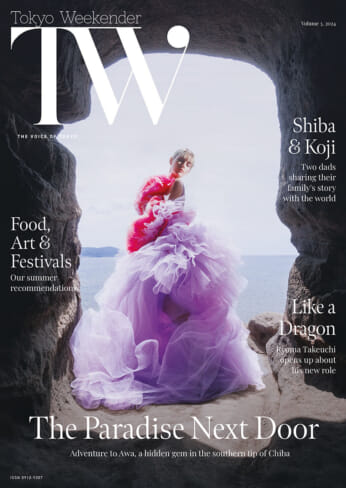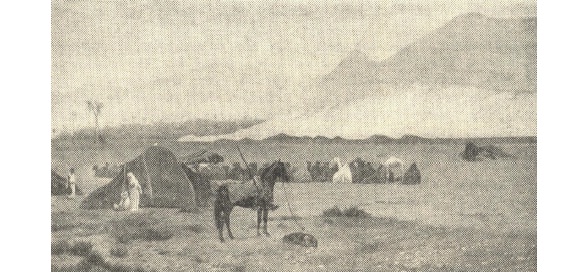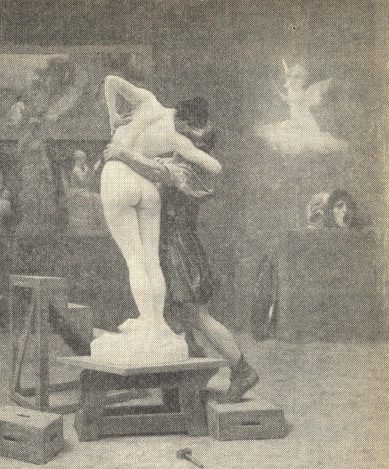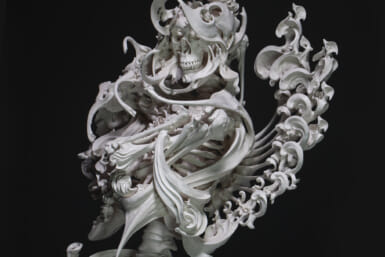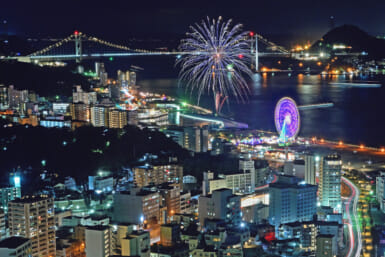Jean-Leon Gerome (1824-1904) and the Realist Movement
The cycle of fashion is not only apparent in the clothing industry. We are constantly being directed to relive periods of yesteryear, especially when yesteryear was only a short , time ago. Nostalgia usually recalls happy memories of youth.
Music of the ’40s is now popular again. It’s funny to hear the songs introduced on the radio as “Golden Oldies” when I stop and realize that the teen-agers buying the records weren’t yet born in the early ’60s. Monaural records to a 16-year-old is like Rag-Time would be to me.
What about the visual arts? Is the resurrection of art forms of yesteryear nostalgia—or a calculated effort to cash in on an abundance of unsold, under-priced pictures? Is it possible that the realization that what we have become accustomed to is just not that much aesthetically satisfying. The cycle change in painting encompasses longer periods of ‘me.
Above I wrote “visual arts” instead of painting, but there are some art forms which have as short a cycle as the clothing industry; specifically industrial design, and the cosmetic element in architecture which has recently had a revival of Art Deco. This flamboyant style of the ’20s and ’30s is similar to the automative design of the late ’50s, which is now popular again.
Painting is different. The price is higher and it is treasured as a precious item. It is not something to use, only to see, enjoy and worship.
Owning a picture unites us with the other great patrons of the past: Our romanticism can place us in the palace of he Medici, or the Vatican.
The contemporary art scene is slowly experiencing a revival of illustrative art. I’m not speaking of the great illustrations of Rembrandt, Michelangelo, Goya, etc., who never lost favor — but those artists who were creating art at a time when there were two or more opposing forces at work. This situation started at the mid-point of the last century and has continued until today.
There are some geniuses who have risen above all this and are well received by both sides, such as Corot and Degas in France and Hopper in the United States. Other great artists have been shunned by one side or another. It’s difficult for us to believe that there are hundreds of painters plying their trade who wouldn’t hang a Matisse in their home, and as many on the other side who wouldn’t give a minute’s attention to John Singer Sargent.
These conflicts in theory are unique to our modern world. In the past, the opposition or criticism of an artist was usually related to his ability. In today’s world, the ability is not questioned; in fact, in most cases the side which is usually put down by the side with the strongest sense of snobbishness is in most cases the most able.
A perfect example of a craftsman who was also one of the most brilliant of storytellers on canvas is Jean-Leon Gerome. Our present generation has been conditioned to a universally accepted theory of art history. The bad guys were the academy—and the good guys were the Impressionists. The battle between Monet, Manet, Renoir, Pissarro, et al, and the establishment has been told often enough.
But! We are usually told only what the Impressionists stood for. The academic side is never discussed. Who were these artists? What did they stand for — and, because they were against the new way of painting, were they necessarily inferior? We find difficulty in accepting the premise “Are you for me or against me?” in politics or anything else. Why is it then so commonly accepted in this most important period of art history…
Gerome belonged to a large important set of painters, writers, sculptors and intellectuals who are no longer famous and almost forgotten. Unfortunately, Gerome’s reputation as an anti-Impressionist has been so stressed that one loses sight of the great popularity within his own century of the man himself.
During the second half of the 19th century the major movement in art was realism and Gerome was a great leader among this group. Impressionism which receives all our attention today, is basically a sub-division of Realism, but even though the realists produced a respectable body of work, they, unfortunately, left a terrible succession of imitators who have since distracted from the true masters of the movement.
Realism in painting is not easy to describe. It is an attitude rather than a style. It is not just an effort to paint representationally, for western art up until our century was always representational. Realism was first of all a reaction to idealism. They wanted to paint people and nature as objective study revealed them. They were interested in events as they happened without moralistic interpretations.
Realism was not just a way of painting; it was an international intellectual movement. It also transformed literature, which created the great period of the novel. Such writers as Flaubert, Guy de Maupassant, Tolstoy and Dreiser are just a few who represent this important period of artistic thought.
Gerome was a student of two of the most important academic painters in French Art history: Delaroche and Gleyre. He taught at the Ecole des Beaux-Arts for 40 years. Gerome was one of the most popular teachers during the 1870s and, through this most influential position, attracted an unusual number of foreign students; many of them Americans. Two of them turned out to be two of the most important painters America had at the turn of the century: Thomas Eakins and J. Alden Weir.
He specialized at that time in genre scenes, which were usually set in an exotic locale—most often North Africa or the Middle East. He was an exacting realist whose detailed paintings reflect the thorough research and careful preparation that went into their creation.
A good example of a typical Gerome painting is “Pygmalion and Galatea” in the New York Metropolitan Museum of Art (reproduced here).
The story is that of the young sculptor Pygmalion. Having done a marble statue of Galatea, he falls in love with his own work, which brought to life by Venus. Gerome’s statue-woman is painted in soft flesh tones in the upper part which becomes alive, and gradually fades into marble white in the lower legs.
I was attracted to this small canvas by Gerome from the first time I saw it as a high school student in New York. Its theatrical attitude has slightly disturbed me as an adult but each time I go to the Met, I cannot help revisiting this old friend of mine. Once seeing a Gerome original it’s difficult to erase it from the mind.
Yet, with all his attraction, he is hardly mentioned in art history books. In fact he is not even mentioned at all in many of them. Because he was so outspoken he becomes the prime villain in the art history books. If we were to have a show devoted to his work today — as was recently done with John Singer Sargent — a new perspective and appreciation of this man would change today’s view of this important painter. Just this small essay on him becomes a welcome addition to the sparse literature devoted to Gerome.
Even so he is an important part in My World of Art.
